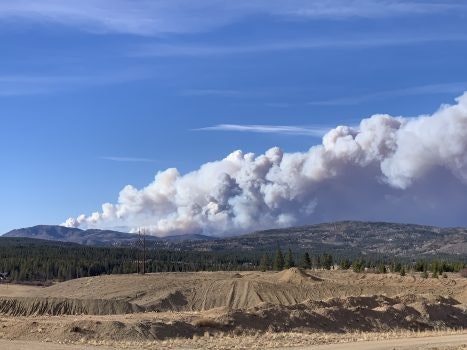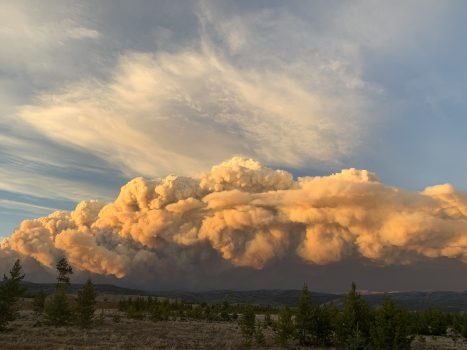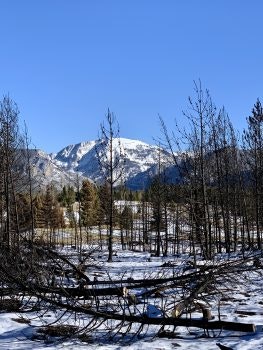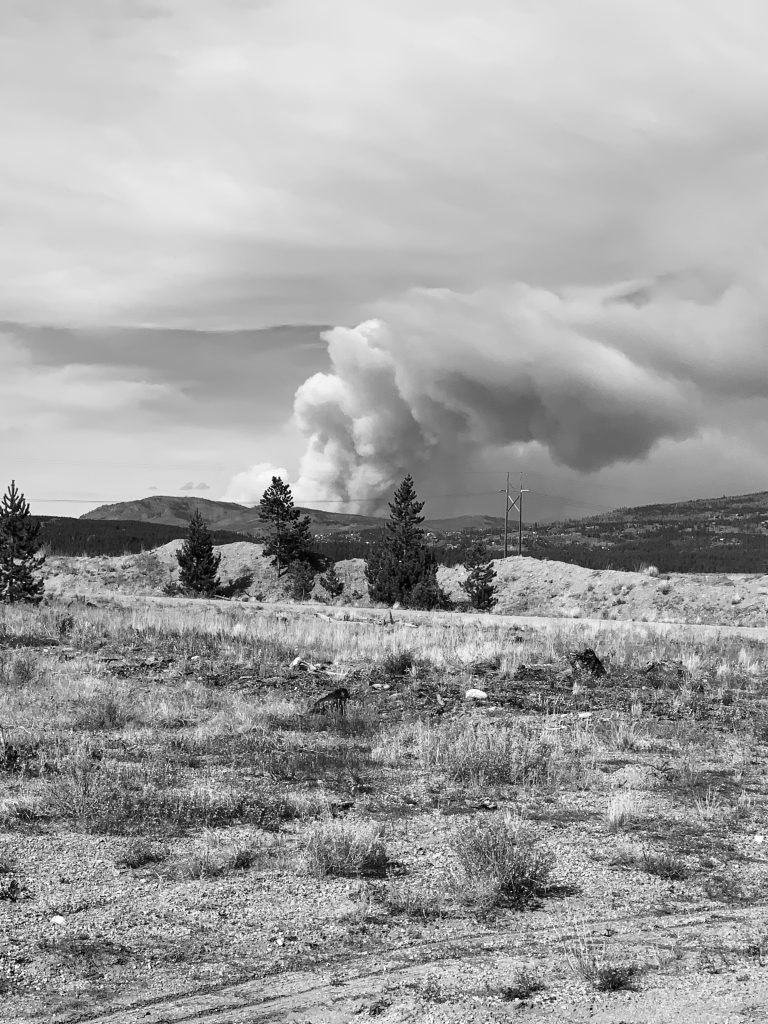Wildfire Recovery Resources














About the East Troublesome Fire (ETF)
The East Troublesome Fire began on the Arapaho National Forest near Kremmling, CO, on the afternoon of October 14, 2020. Within three days, the fire had spread to over 10,000 acres and resulted in the evacuation of approximately 90 homes.
Between Oct. 20-23, the fire exploded from 18,550 acres to 187,964 acres. Not only did the fire ravage through several rural subdivisions near the town of Grand Lake, it also spread eastward into the Rocky Mountain National Park and crossed the Continental Divide to western edge of Estes Park in Larimer County. During this period, over 7,000 structures were threatened, and a population of over 35,000 was placed under a mandatory evacuation. The fire was officially declared contained on Nov. 30, 2020, with a total burned area of 193,812 acres. Estimates suggest that 366 residences and around 200 outbuildings/commercial structures were destroyed or damaged in the fire.
~Summary from East Troublesome Fire Inciweb webpage
With winds ranging from 90-132 miles per hour and 100,000 acres burned in a mere 180 minutes, the East Troublesome Fire was a true anomaly of a firestorm. Though the devastation was massive, and the recovery will take years, our community remains strong and resilient.
Natural Resources Recovery Resources
A group of local land management, conservation, and government agencies are working together on watershed protection and recovery related to the East Troublesome Fire (ETF). The Emergency Watershed Protection Program (EWP), administered by the USDA Natural Resources Conservation Service, is one such program currently being implemented to reduce threats to life and property in the ETF burn area. Please check out the links below for lots of helpful resources and assistance.
2020 Post-Fire Watershed Restoration LESSONS LEARNED
Post-Fire Flooding & Mudslides
Flood Readiness
Post-Fire Hazards: Mudslides & Debris Flows
Red Cross Mudslide Safety Info
Colorado Flood Threat Bulletin
General Fire Recovery Resources
CSFS Restoration and Rehabilitation Resources (Colorado State Forest Service)
Wildfire Ready Watersheds Educational Resources (Colorado Water Conservation Board)
“After the Flames” Resources
CSU Extension Fire Resources Webpage (CSU Extension)
EDEN (Extension Disaster Education Network)
FEMA (Federal Emergency Management Agency)
Guide to Staying Safe During Wildfires (SafeHome.org)
Wildfire (Ready Colorado)
Wildfires (US Department of Homeland Security)
Wildfire Retardants (eXtension)
Be Wildfire Ready (Grand County Wildfire Council)
Post-Fire Recovery Resources (Coalitions & Collaboratives -COCO)
Soil Erosion
Soil Erosion Control after Wildfire (CSU Extension)
Erosion Potential After a Wildfire (University of Idaho)
What are Hydrophobic Soils? (NRCS)
Recovery Structure fact sheets
BALN Structures
Concrete Barrier Wall
Contour Wattles
Erosion Control Mat
Hand Raking
Hesco Flood Barrier
Log Erosion Barriers
Mechanical Scarification
Modified Crib Wall
Rock Check Dam
Sandbag Barrier
Seeding Fact Sheet
Straw Bale Check Dam
Seeding
Seeding after Wildfire (NRCS)
MPCD Seed Sales Page (MPCD)
Grass Seed Mixes to Reduce Wildfire Hazard (CSFS)
Native Grasses for Use in Colorado Landscapes (CSU Extension)
Trees
Protecting Your Home: Creating Wildfire-Defensible Zones (CSFS)
Vegetative Recovery after Wildfire (CSU Extension)
Fire Resistant Landscaping (CSFS)
Taking Care of Residential Trees after Wildfire (University of Nevada)
Native Trees for Colorado Landscape (CSU Extension)
Determine the Amount of Fire Injury Which Will Kill a Ponderosa or Lodgepole Pine (CSFS)
Determine the Amount of Fire Injury Which Will Kill a Douglas Fir (CSFS)
Determine the Amount of Fire Injury Which Will Kill a Aspen (CSFS)
Insects and Diseases Associated with Forest Fires (CSFS)
Replanting in Burn Areas: Tips for Safety and Success (CSFS)
Restoration and Rehabilitation (CSFS)
Tree Seedlings For Sale (MPCD)
Water Resources
Addressing Impacts of Wildfire on Water Resources (CSU Extension)
Resources for Water Users Impacted by Wildfire (CO Div of Water Resources)
Protecting and Restoring Ponds Following a Wildfire (CSU Extension)
Livestock/Pet/Ag Producers
Emergency Conservation Program for Ag Producers (FSA)
Cattle Care After Wildfires (Texas A&M)
Caring for Horses After Wildfire (Texas A&M)
Checklist of Considerations for Post-Fire Management (Texas A&M)
Fires & Wildfires (Texas A&M AgriLife Extension)
Caring for Livestock During Disaster (CSU Extension)
Caring for Livestock After Disaster (CSU Extension)
Colorado Hay Resources (Colorado Dept of Ag)
Guidelines for Horses Exposed to Wildfire Smoke (UC Davis Vet Med)
Wildfires, Smoke and Livestock (UC Davis)
Saving Pets, Saving People (CSU Extension)
Wildlife
Fencing For Wildlife (CPW)
Tracking Wildlife in Wildfire (KDVR/CPW)
ETF-Specific Resources
ETF Disaster Assistance Center
Northern Water’s Watershed Recovery Page
Grand County’s Fire and Watershed Recovery Page
